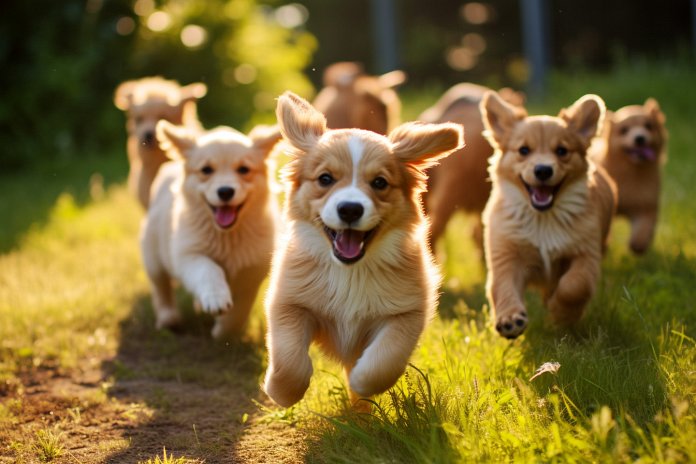
The early stage of puppyhood is a crucial time for a dog’s development. During this time, puppies rely on their littermates and mother for socialization and learning. While this early imprinting is important, it doesn’t guarantee that dogs will recognize their siblings once they grow up and go to different homes.
Signs Your Dog Knows Their Siblings
By observing your dog’s behavior and body language, you can determine if they recognize their siblings. When dogs meet, they typically sniff each other’s hindquarters. Dominant dogs may stand over others and have a more assertive posture, while submissive dogs exhibit signs of surrender such as tucking their tail and cowering. If your dog recognizes their sibling, they may exhibit heightened excitement, prolonged sniffing, and a more playful demeanor.
Body Language
Alertness, a wagging tail, raised ears, and sniffing are all signs that your dog may recognize a sibling. Other indications include initiating play, nuzzling, and exhibiting excited behavior.
The History of Dogs Knowing Their Siblings
During the first few weeks of a puppy’s life, they rely on their mother for stimulation and care. By two to four weeks, they start recognizing their mother and littermates. From four to seven weeks, puppies learn important social skills and boundaries from their siblings. After leaving the breeder at around eight weeks, they have limited time together to continue developing these relationships.
The Science of Dogs Knowing Their Siblings
While dogs are intelligent, they do not possess episodic memory and cannot remember specific events. It is unlikely that they can recognize their littermates once they are separated. However, if they continue to live together or regularly interact, they may recognize each other based on scent and visual cues.
Helping Your Dog Get Along with Other Dogs
Socialization is crucial during a puppy’s critical window of three to 20 weeks. This involves exposing them to various sights, sounds, smells, and sensations without causing fear. Other important steps include gentle handling, introducing different sounds, teaching proper feeding behavior, helping them become comfortable with being alone, introducing them to new people, teaching basic obedience commands, and preventing biting.
By following these guidelines, you can ensure that your puppy grows into a well-socialized and happy dog.
“Dogs may not remember their siblings, but the early experiences they share shape their social development.”

Tips & Things to Know
1️⃣ Observe your dog’s body language: By paying attention to your dog’s posture, fur, ears, eyes, and tail, you can better understand their intentions and disposition towards other dogs. This is especially important in social situations to ensure the safety of all dogs involved.
2️⃣ Watch for signs of recognition: If your dog recognizes their sibling, you may notice longer sniffing, perked up ears, and a wagging tail. They may also engage in rough play, as littermates are not as careful with each other.
3️⃣ Socialize your puppy early: The critical window for socializing your puppy is between 3 weeks and 20 weeks of age. Expose them to various sights, sounds, smells, and sensations to prevent fearfulness and aggression. Additionally, teach them basic obedience commands and how to be alone to prevent separation anxiety.
Frequently Asked Questions, Answered ✅
1. How can you tell if your dog recognizes their siblings?
– Some signs that your dog may recognize their siblings include sniffing for longer periods of time, perking up their ears, and wagging their tail.
2. What are some body language signs that indicate a dog knows their sibling?
– Alert posture, wagging tail, sniffing, and ears up are some body language signs that indicate a dog knows their sibling.
3. What is the critical period for socializing a puppy?
– According to the American Humane Society, the critical window for socializing a puppy is between 3 weeks and 20 weeks of age.
4. Can dogs remember specific events or recognize their littermates?
– Dogs do not have episodic memory and are unlikely to remember specific events or recognize their littermates once they have been separated.
5. What are some tips for socializing a puppy?
– Some tips for socializing a puppy include gently handling the pup, introducing different sounds, teaching the pup to eat from a bowl, teaching them to be alone, introducing them to new people, and teaching basic obedience commands.